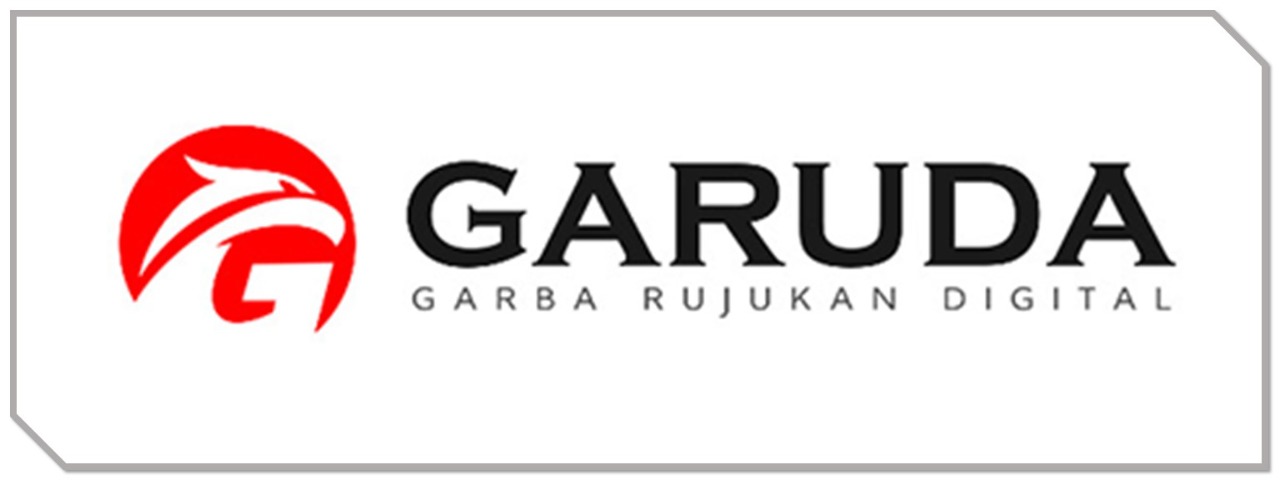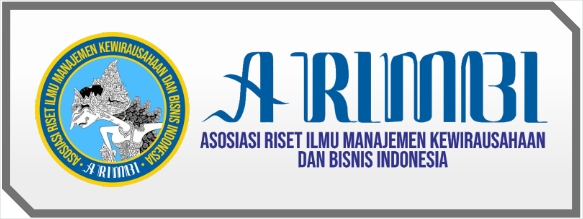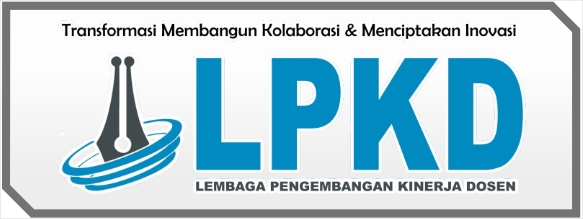CORPORATE GOVERNANCE, DISCLOSURE QUALITY, AND COST OF EQUITY: EVIDENCE FROM PAKISTAN
DOI:
https://doi.org/10.55606/iceb.v1i2.127Keywords:
Pakistani listed companies, corporate companies, Quality Discourse, cost of capital.Abstract
To be successful in the financial world, you must know how the public disclosure of business information affects stock prices. Specifically for Pakistan, this research will help us better understand the relationship between corporate governance, disclosure quality, and equity cost The Sys-GMM model has been employed by 167 non-financial enterprises listed on the Pakistan Stock Exchange since 2017. (PSX). Research shows it was in use between 2018 and 2020. The Sys-GMM technique for estimating may be used to account for endogeneity in corporate governance problems. We discovered that GMM projections failed to account for endogeneity, resulting in inaccurate conclusions, using pooled OLS and fixed-effect estimates. According to the research, the cost of equality and financial transparency are mutually incompatible. All of these factors contribute to the PSE's stock price decline, including board size, concentrated ownership, and CEO duality. The research es-tablishes a relationship between independent audit committees and high-quality audits and reduced equity expenses. Independent directors and competent auditors command a premium on the PSX. The duration of the approval process for financial statements has no bearing on the board's independence. Due to the scarcity of information disclosed in annual reports, investors anticipate a higher rate of return. The conclu-sions of the research may be beneficial to Pakistan's corporate govern-ance authorities and investors.
References
Botosan, C. A. (2000). Evidence that greater disclosure lowers the cost of equity capital. Journal of Applied Corporate Finance, 12(4), 60-69.
Al Attar, M. K. (2016). Corporate Governance and Financial Statement Disclosure Quality in Jordanian Commercial Banks. International Journal of Economics and Finance, 8(10),192-205
Beyer, A., Cohen, D. A., Lys, T.Z., & Walther, B. R. (2010). The financial reporting environment: Review of the recent literature. Journal Of Accounting and Economics, 50(2), 296-343.
Easley, D., & O'hara, M. (2004). Information and the cost of capital. The journal of finance, 59(4), 1553-1583.
Dasgupta, S., & Gao, N. (2004). Cancelled acquisitions, market information, and corporate governance. Market Information, and Corporate Governance (March 2004).
Cormier, D., Ledoux, M. J., Magnan, M., & Aerts, W. (2010). Corporate governance and information asymmetry between managers and investors. Corporate Governance: The international journal of business in society.
Welker, M., Partridge, D. J., & Hardin, R. (2011). Corporate lives: New perspectives on the social life of the corporate form: An introduction to supplement 3. Current Anthropology, 52(S3), S3-S16.
Ajina et al., 2015 Ajina, A., Sougne, D., Lakhal, F. (2015). Corporate disclosure, Information Asymmetry and Stock Market Liquidity in France. The Journal of Applied Business Research 31(4),1223-1238
Gao, P. (2010). Disclosure quality, cost of capital, and investor welfare. The Accounting Review, 85(1), 1-29.
Botosan, C. A., & Plumlee, M. A. (2002). A re‐examination of disclosure level and the expected cost of equity capital. Journal of Accounting Research, 40(1), 21-40.
Botosan, 2018
Demsetz, H. (2018). When Does the Rule of Liability Matter?. In Economics and Liability for Environmental Problems (pp. 121-136). Routledge.Brown, 2015).
Meckling, 2016
Donker, H., Poff, D., & Zahir, S. (2008). Corporate values, codes of ethics, and firm performance: A look at the Canadian context. Journal of Business Ethics, 82(3), 527-537.
Lanis, R., & Richardson, G. (2018). Outside directors, corporate social responsibility performance, and corporate tax aggressiveness: An empirical analysis. Journal of Accounting, Auditing & Finance, 33(2), 228-251.
Ali Shah, S. Z., & Butt, S. A. (2019). The impact of corporate governance on the cost of equity: empirical evidence from Pakistani listed companies. The Lahore Journal of Economics, 14(1) 139-171.
Butt, S. A., & Hasan, A. (2009). Impact of ownership structure and corporate governance on the capital structure of Pakistani listed companies. International Journal of Business and Management, 4(2), 50-57.
2009 Wei, G. W. (2009). Uncertain linguistic hybrid geometric mean operator and its application to group decision making under uncertain linguistic environment. International Journal of Uncertainty, Fuzziness and Knowledge-Based Systems, 17(02), 251-267.
Clarkson, P., Guedes, J., & Thompson, R. (1996). On the diversification, observability, and measurement of estimation risk. Journal of Financial and Quantitative Analysis, 31(1), 69-84.
Lombardo, S. (2019). Regulatory competition in European company law. Where do we stand twenty years after Centros?. Where Do We Stand Twenty Years after Centros.
Kothari, S. P., Li, X., & Short, J. E. (2009). The effect of disclosures by management, analysts, and business press on cost of capital, return volatility, and analyst forecasts: A study using content analysis. The Accounting Review, 84(5), 1639-1670.
Bhat, K. U., Chen, Y., Jebran, K., & Bhutto, N. A. (2018). Corporate governance and firm value: a comparative analysis of state and non-state owned companies in the context of Pakistan. Corporate Governance: The international journal of business in society.
Khalifa, R. and Ahrens, T. (2015), “The impact of regulation on management control”, Qualitative Research in Accounting & Management, Vol. 12 No. 2, pp. 106-126.
Courts, N. F., Newton, A. N., & McNeal, L. J. (2005). Husbands and wives living with multiple sclerosis. Journal of Neuroscience Nursing, 37(1), 20.
Kristandl, G., & Bontis, N. (2007). The impact of voluntary disclosure on cost of equity capital estimates in a temporal setting. Journal of Intellectual Capital, 8(4), 577-594.
Michaels. A. (2017). Relationship of corporate social responsibility disclosure on information asymmetry and the cost of capital. Journal of Management Control, 28(3), 251–274
Dutta, S., & Nezlobin, A. (2017). Information Disclosure, Firm Growth, and the Cost of Capital. Journal of Financial Economics, 123(2), 415-431.
Monteiro da Silva, S.M., Aibar-Guzman, B. (2010). Determinants of environmental disclosure in the annual reports of large companies operating in Portugal. Corporate Social Responsibility and Environmental Management, 17, 185-204.
Kolk, A. (2008),“Sustainability, accountability and corporate governance: exploring multinationals’ reporting practices”, Business Strategy and the Environment, Vol. 17 No. 1, pp. 1-15.
Afsharipour, A. (2009). Corporate governance convergence: lessons from the Indian experience. Nw. J. Int'l L. & Bus., 29, 335.
Rajharia, P., & Sharma, B. (2014). Legal aspects of corporate governance for it companies in India. IMPACT: International Journal of Research in Business Management, 2(11), 35-42.
Arif, K., & Syed, N. (2015). Impact of corporate governance on performance of a firm: A comparison between commercial banks and financial services companies of Pakistan. European Journal of Business and Management, 7(10), 54-60.
Mansur, H., & Tangl, A. (2018). The effect of corporate governance on the financial performance of listed companies in Amman stock exchange (Jordan). Journal of Advanced Management Science Vol, 6(2), 97-102.
Jizi, M. I., Salama, A., Dixon, R., & Stratling, R. (2014). Corporate governance and corporate social responsibility disclosure: Evidence from the US banking sector. Journal of business ethics, 125(4), 601-615.
Okoye, L. U., Evbuomwan, G. O., Achugamonu, U., & Araghan, I. (2016). Impact of corporate governance on the profitability of the Nigerian banking sector. Science and Technology, 7(1).
Palaniappan, G. (2017). Determinants of corporate financial performance relating to board characteristics of corporate governance in Indian manufacturing industry: An empirical study. European Journal of Management and Business Economics.
Bauer, R., Guenster, N., & Otten, R. (2004). Empirical evidence on corporate governance in Europe: The effect on stock returns, firm value and performance. Journal of Asset Management, 5(2), 91-104.
Klapper, L., Love, I., 2004. Corporate governance, investor protection and performance innemerging markets. J. Corp. Financ. 10, 703–728
Abatecola, G., Caputo, A., Mari, M., & Poggesi, S. (2012). Relations among corporate governance, codes of conduct, and the profitability of public utilities: an empirical study of companies on the Italian stock exchange. International Journal of Management, 29(2), 611-626.
Reed, D. (2002). Corporate governance reforms in developing countries. Journal of business ethics, 37(3), 223-247.
Spanos, L. J. (2005). Corporate governance in Greece: developments and policy implications. Corporate Governance: The international journal of business in society.
Cheung, Y. L., Jiang, P., Limpaphayom, P., & Lu, T. (2010). Corporate governance in China: A step forward. European Financial Management, 16(1), 94-123.
Bae, K. H., & Goyal, V. K. (2010). Equity market liberalization and corporate governance. Journal of Corporate Finance, 16(5), 609-621.
Yang, T., & Zhao, S. (2014). CEO duality and firm performance: Evidence from an exogenous shock to the competitive environment. Journal of banking & finance, 49, 534-552.
Botosan, C. A. (2006). Disclosure and the cost of capital: what do we know? Accounting and Business Research, 36(sup 1), 31-40.
Bhagat, S., Black, B., 2002. The non-correlation between board independence and long-term firm performance. Journal of Corporation Law 27, 231–273.
Dua, P., & Dua, S. (2015). A review article on corporate governance reforms in India. International Journal of Research, 2(2), 806-835.
Patibandla, M. (2006). Equity pattern, corporate governance and performance: A study of India's corporate sector. Journal of Economic Behavior & Organization, 59(1), 29-44.
Sarpal, S., & Singh, F. (2013). Board size and corporate performance: an empirical investigation. International Journal of Business Ethics in developing economies, 2(1), 1.
Kumar, J. (2004). Does corporate governance influence firm value? Evidence from Indian firms. Journal of Entrepreneurial Finance, JEF, 9(2), 61-91.
Misra, D., & Vishnani, S. (2012). Impact of corporate governance regulation on market risk. Vikalpa, 37(2), 19-32.
Black, B. S., & Khanna, V. S. (2007). Can corporate governance reforms increase firm market values? Event study evidence from India. Journal of Empirical Legal Studies, 4(4), 749-796.
Kohli, N., & Saha, G. C. (2008). Corporate governance and valuations: Evidence from selected Indian companies. International Journal of Disclosure and Governance, 5(3), 236-251.
Aguilera, R. V., Talaulicar, T., Chung, C. N., Jimenez, G., & Goel, S. (2015). Special issue on “cross‐national perspectives on ownership and governance in family firms”. Corporate Governance: An International Review, 23(3), 161-166.
Dharmapala, D., & Khanna, V. (2013). Corporate governance, enforcement, and firm value: evidence from India. The Journal of Law, Economics, & Organization, 29(5), 1056-1084.
Saher et al. (2015)
Leithwood, K., Louis, K. S., Anderson, S., & Wahlstrom, K. (2004). How Leadership Influences Student Learning. Review of Research. Wallace Foundation, The.
Ashbaugh, H., Collins, D. W., & LaFond, R. (2004). Corporate governance and the cost of equity capital. Emory, University of Iowa. Retrieved on January 26, 2006.
Setiany et al. (2017),
Khemakhem, H., & Dicko, S. (2013). Directors' Political Connections and Compliance with Board of Directors Regulations: The Case of S&P/Tsx 300 Companies. International Journal of Business and Management, 8(24), 117.
Shah et al., 2009). Ali Shah, S. Z., Butt, S. A., & Hassan, A. (2009). Corporate governance and earnings management an empirical evidence form Pakistani listed companies. European Journal of Scientific Research, 26(4), 624-638.
Anwar, Z., Khan, M. K., & Danish, R. Q. (2019). Corporate governance and cost of equity: evidence from Asian countries. Journal of Political Studies, 26(1), 193-216.
Setiany et al., 2017)
Khan, T. M., & Nosheen, S. (2020). Corporate governance mechanism and comparative analysis of one-tier and two-tier board structures: evidence from ASEAN countries. International Journal of Disclosure and Governance, 17(2), 61-72.
Lipton, M., & Lorsch, J. W. (1992). A modest proposal for improved corporate governance. The business lawyer, 59-77.
Adams, R. B., & Mehran, H. (2003). Is corporate governance different for bank holding companies?. Available at SSRN 387561.
Anderson, N., Potočnik, K., & Zhou, J. (2014). Innovation and creativity in organizations: A state-of-the-science review, prospective commentary, and guiding framework. Journal of management, 40(5), 1297-1333.
Zahra, S. A., & Pearce, J. A. (1989). Boards of directors and corporate financial performance: A review and integrative model. Journal of management, 15(2), 291-334.
Dalton, D. R., Daily, C. M., Johnson, J. L. and Ellstrand, A. E. (1999) Number of directors and financial performance: A meta-analysis, Academy of Management Journal, 42, 674-686.
Goodstein, J., Gautam, K., & Boeker, W. (1994). The effects of board size and diversity on strategic change. Strategic management journal, 15(3), 241-250.
Yermack, D. (1996). Higher market valuation of companies with a small board of directors. Journal of financial economics, 40(2), 185-211.
Luqman, R., Ul Hassan, M., Tabasum, S., Khakwani, M. S., & Irshad, S. (2018). Probability of financial distress and proposed adoption of corporate governance structures: Evidence from Pakistan. Cogent Business & Management, 5(1), 1492869.
Singh, S., Tabassum, N., Darwish, T. K., & Batsakis, G. (2018). Corporate governance and Tobin's Q as a measure of organizational performance. British journal of management, 29(1), 171-190.
Useem, M., Bowman, E. H., Myatt, J., & Irvine, C. W. (1993). US institutional investors look at corporate governance in the 1990s. European Management Journal, 11(2), 175-189.
Adams, R., 2009. Governance and the financial crisis. Unpublished working paper, University of Queensland and the European Corporate Governance Institute (ECGI).
Ullah, M. S., Muttakin, M. B., & Khan, A. (2019). Corporate governance and corporate social responsibility disclosures in insurance companies. International Journal of Accounting & Information Management.
Shrivastava, R., Lee, J., & Mussalli, G. D. (2018). Factor Investing in the China A-Shares Market: Revelations from a Contextual Alpha Model. White paper, PanAgora.
Bin, L., Chen, J., & Ngo, A. X. (2020). Revisiting executive pay, firm performance, and corporate governance in China. Economics, Management and Financial Markets, 15(1), 9-32.
Razali, M. W. M., Ghazali, S. S., Lunyai, J., & Hwang, J. Y. T. (2018). Tax planning and firm value: Evidence from Malaysia. International Journal of Academic Research in Business and Social Sciences, 8(11), 210-222.
Baliga, B. R., Moyer, R. C., & Rao, R. S. (1996). CEO duality and firm performance: What's the fuss?. Strategic management journal, 17(1), 41-53.
Mallette and Fowler(1992). Effects of board composition and stock ownership on the adoption of “poison pills”. Academy of Management journal, 35(5), 1010-1035.
Dalton, D. R., & Kesner, I. F. (1987). Composition and CEO duality in boards of directors: An international perspective. Journal of International Business Studies, 18(3), 33-42.
Wan, D., & Ong, C. H. (2005). Board Structure, Process and Performance: evidence from public‐listed companies in Singapore. Corporate Governance: An International Review, 13(2), 277-290.
Sajjad, A., Jillani, A., & Raziq, M. M. (2018). Sustainability in the Pakistani hotel industry: an empirical study. Corporate Governance: The International Journal of Business in Society.
Hassan, W. K., Aljaaidi, K. S., Bin Abidin, S., & Nasser, A. M. (2018). Internal corporate governance mechanisms and audit quality: Evidence from GCC region. International Journal of Advanced and Applied Sciences, 5(8), 72-90.
Simsek, Z. (2007). CEO tenure and organizational performance: An intervening model. Strategic Management Journal, 28(6), 653-662.
Hambrick, D. C., & Gregory, D. S. (1991). Fukutomi. The Seasons of a CEO’s Tenure”.” Academy of Management Review, 16, 719-742.
Hambrick, D. C., & D'Aveni, R. A. (1992). Top team deterioration as part of the downward spiral of large corporate bankruptcies. Management Science, 38(10), 1445-1466.
Hermalin, B., Weisbach, M.,1998. Endogenously Chosen Boards of Directors and Their Monitoring of the CEO. American Economic Review, March 1998, 88 (1), 96–118.
Kaur, R. (2019). An Essay on Understanding Corporate Governance: Models, Theories and Global Evolution. Journal of International Business, 5(2), 93-103.
Bertoncelli et al., 2021).
Gul, S., Rashid, A., & Muhammad, F. (2016). The impact of corporate governance on the cost of capital: The case of small, medium and large capital firms. Journal Of Business Studies, 12(1).
Resmini, F. (2016). Corporate governance and cost of equity: empirical evidence from Latin American companies. Corporate Governance: The International Journal of Business in Society, 16(5), 831-848.
Evans, M. E. (2015). Commitment and cost of equity capital: An examination of timely balance sheet disclosure in earnings announcements. Contemporary Accounting Research, 33(3), 1136-1171
Afify, H.A.E. (2009). Determinants of audit report lag: Does implementing corporate governance have any impact? Empirical evidence from Egypt. Journal of Applied Accounting Research, 10(1), 56-86.
Khan, J., & Rehman, S. U. (2020). Impact of corporate governance compliance and board attributes on operating liquidity in pre-and post-corporate governance reforms. Corporate Governance: The international journal of business in society.
Maddala, G. S. (1992). Introduction to econometrics. New York, Macmillan.
Orens, R., Aerts, W., & Cormier, D. (2010). Web‐based non‐financial disclosure and cost of finance. Journal of Business Finance & Accounting, 37(9‐10), 1057-1093.
Wintoki, M. B., Linck, J. S., & Netter, J. M. (2012). Endogeneity and the dynamics of internal corporate governance. Journal of financial economics, 105(3), 581-606.
Keane & Runkle, 1992).
Crippen, D. L., Elmendorf, D. W., & Holtz-Eakin, D. (2018). Letter from Former CBO Directors on the Importance of CBO’s Role in the Legislative Process.
Blundell, R., & Bond, S. (1998). Initial conditions and moment restrictions in dynamic panel data models. Journal of Econometrics, 87(1), 115-143
Boujelbene, M. A., & Affes, H. (2013). The impact of intellectual capital disclosure on cost of equity capital: A case of French firms. Journal of Economics Finance and Administrative Science, 18(34), 45-53.
Gebhardt, W. R., Lee, C.M.C., & Swaminathan, B. (2001). Toward an implied cost of capital. Journal Of Accounting Research, 39(1), 135- 176.
Khlif, H., Samaha, Khaled., & Azzam, I. (2015). Disclosure, ownership structure, earnings announcement lag and cost of equity capital in emerging markets: The case of the Egyptian stock exchange. Journal of Applied Accounting Research, 16(1), 28-57.
Nosheen, S.& Chonglerttham, S. (2013). Impact of board leadership and audit quality on disclosure quality: Evidence from Pakistan. International Journal of Disclosure and Governance, 10(4), 311-327.
Pfeffer, J. (2018). Dying for a paycheck: How modern management harms employee health and company performance—and what we can do about it.
Omar, B., & Simon, J. (2011). Corporate aggregate disclosure practices in Jordan. Advances in Accounting, 27(1), 166-186.
Zhu, M., Song, Y., &Wang, H., (2018). Sustainable strategy for corporate governance based on the sentiment analysis of financial reports with CSR. Financial Innovation, 4(1), 1-14.
Zhu, F. (2014). Cost of capital and corporate governance: International study. International Review of Finance, 14(3), 393-429.
Hair, J.F., Jussila, I., Tarkiainen, A., & Sarstedt, M. (2015). Individual psychological ownership: Concepts, evidence, and implications for research in marketing. Journal of Marketing Theory and Practice, 23(2), 121-139.
Wintoki, Wintoki, M. B., Linck, J. S., & Netter, J. M. (2012). Endogeneity and the dynamics of internal corporate governance. Journal of Financial Economics, 105(3), 581-606.
M. B. (2007). Corporate boards and regulation: The effect of the Sarbanes–Oxley Act and the exchange listing requirements on firm value. Journal of Corporate Finance, 13(2), 229-250.
Ashbaugh and his colleagues (2004)
Chen, K. C.W., Chen, Z., & Wei, K.C. J., (2009). Legal protection of investors, corporate governance, and the cost of equity capital. Journal of Corporate Finance, 15(3), 273-289.
Guedhami and Mishra's (2009)
Hope, O. K., Kang, T., Thomas, W. B., & Yoo, Y. K. (2009). Impact of excess auditor remuneration on the cost of equity capital around the world. Journal of Accounting, Auditing & Finance, 24(2), 177-210.
Botosan, C. A. (1997). Disclosure level and the cost of equity capital. The Accounting Review, 72(3), 323-349.
















